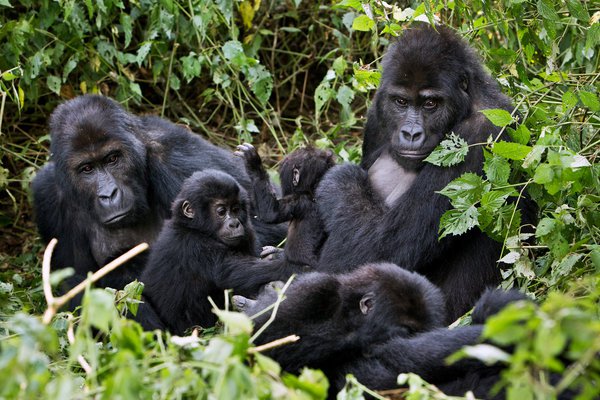The Grauer’s gorilla, the world’s largest primate, has been a source of continual worry for conservationists for more than two decades. Longstanding conflict in the deep jungles of the eastern Democratic Republic of Congo left experts with no choice but to guess at how that gorilla subspecies may be faring.

Now, with tensions abating somewhat, researchers finally have an updated gorilla head count — one that confirms their fears. According to findings compiled by an international team of conservationists, Grauer’s gorilla populations have plummeted 77 percent over the last 20 years, with fewer than 3,800 of the animals remaining.
“We suspected that the Grauer’s gorilla had declined because of all the insecurity in the region, but no one had an idea of how much they’d declined by,” said Andrew Plumptre, director of the Wildlife Conservation Society’s Albertine Rift Programme in Central and Eastern Africa. “It turns out that the rate of collapse pushes this subspecies to the verge of extinction.”
Grauer’s gorillas — named after Rudolf Grauer, an Austrian explorer and zoologist who first recognized the apes as a separate subspecies — resemble their close relative, the mountain gorilla, save for their longer limbs and shorter hair. Although Grauer’s and mountain gorilla populations were once connected, years of isolation have left them genetically distinct enough to warrant separate designations as eastern gorilla subspecies.
In 1994, the Wildlife Conservation Society conducted surveys in and around Kahuzi-Biega National Park, in what was then eastern Zaire. Researchers estimated that 17,000 Grauer’s gorillas remained. But the Rwandan genocide that year led to the gorillas’ precipitous decline.
An estimated 800,000 Rwandans were killed over a three-month period, while hundreds of thousands more fled to neighbouring Zaire. Some of those refugees formed militias such as the Democratic Forces for the Liberation of Rwanda, and the forest served as their stronghold and hide-out.
Instability soon spread, leading to the overthrow of President Mobutu Sese Sekoand civil war in the newly formed Democratic Republic of Congo. From 1996 to 2003, that conflict cost the lives of an estimated five million people, and also brought the formation of more armed groups, 69 of which continue to operate in the eastern part of the country.
By Rachel Nuwer, the New York Times
